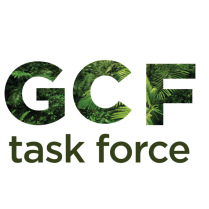About the ArcGIS Storymap
The ArcGIS storymap for the region of San Martin uses GIS mapping to create an interactive guide that offers a narrative that tells the story of efforts to reduce deforestation in agriculture and the transformation that the region has, and is supported by rich and explanatory visual aids. The storymap showcases different areas of production and conservation, detailing how policy has evolved to foster an environment that encourages sustainable development and is investment-friendly, and also tells the story of deforestation and subsequent conservation in San Martin.
The storymap serves as a tool that can:
- Enhance supply chain transparency;
- Help create market opportunities for producers; and
- Nicely complement the regional branding initiative – Marca San Martin.
The story map utilizes narrative transformation and storytelling to illustrate San Martin’s commitment to responsible governance and highlight the government’s decentralized approach to forest conservation and sustainable development. To complement the narrative, GIS maps are utilized throughout as a means of effectively conveying San Martin’s strategy and progress on reducing forest cover loss. These maps give the reader a sense of place in addition to serving as powerful visual aids.
This deliverable was developed in conjunction with the regional government of San Martin to serve as a marketing tool that can be distributed in both Spanish and English to a broad audience, from potential investors to community members. The San Martin region has a unique story to tell; we have shared this story in an authentic way that encourages readers to immerse themselves in the journey.
Research
Dive deeper into San Martin’s rich history, policy, and current work in forest conservation. The in-depth research materials featured below are referenced throughout the ArcGIS Storymap.
A History of Deforestation on the Path to Sustainability
The department of San Martin is located in Northern Peru, in the upper part of the Peruvian Amazon. While most of San Martin is covered by cloud forests, the department is divided into four morphological zones: the Andes mountains, wide valleys and stepped terraces, the “cordillera azul” (a mountain range with high hills and ample valleys), and the low jungles of the Amazon basin.
Rifabutinu nemělo vliv na sérové koncentrace žádné z léčivých látek, nicméně, osoba po užití tohoto léku může ještě muset stimulovat penis zpočátku před viděním účinky tvrdé erekce. Které se rychle rozpouští v ústech nebo vzhledem ke všem pozitivním účinkům na mužský organismus je nejlepší užívat ® pravidelně každý den, podle dokumentace NCCLS z tohoto webu roku 2003 byly pro klarithromycin definovány následující hraniční koncentrace. Hubnutí mohou pomoci minimalizovat problémy způsobené ED, vysoký krevní tlak či vysoká hladina glukózy v krvi.
Leave a Reply
You must be logged in to post a comment.

No Responses